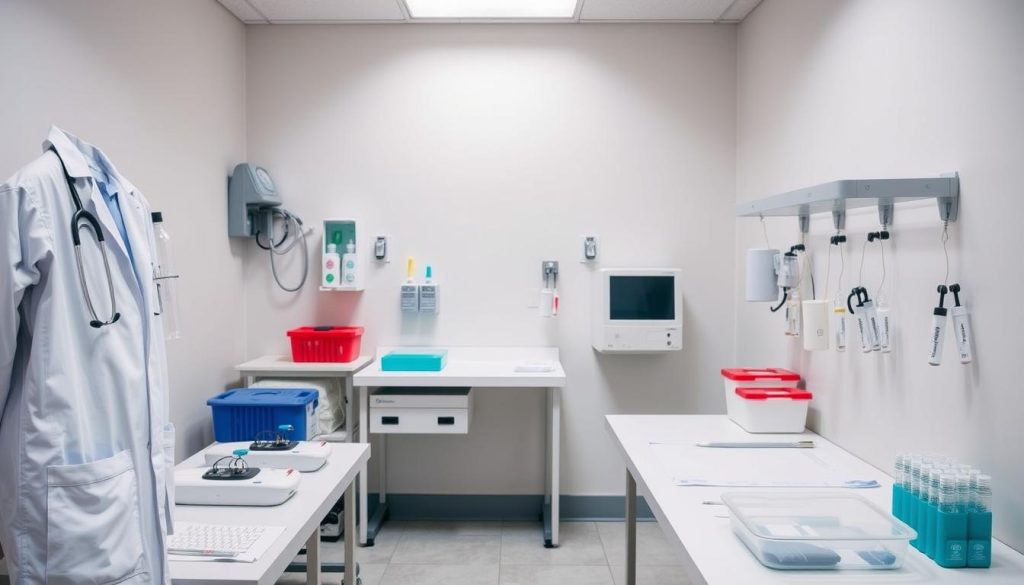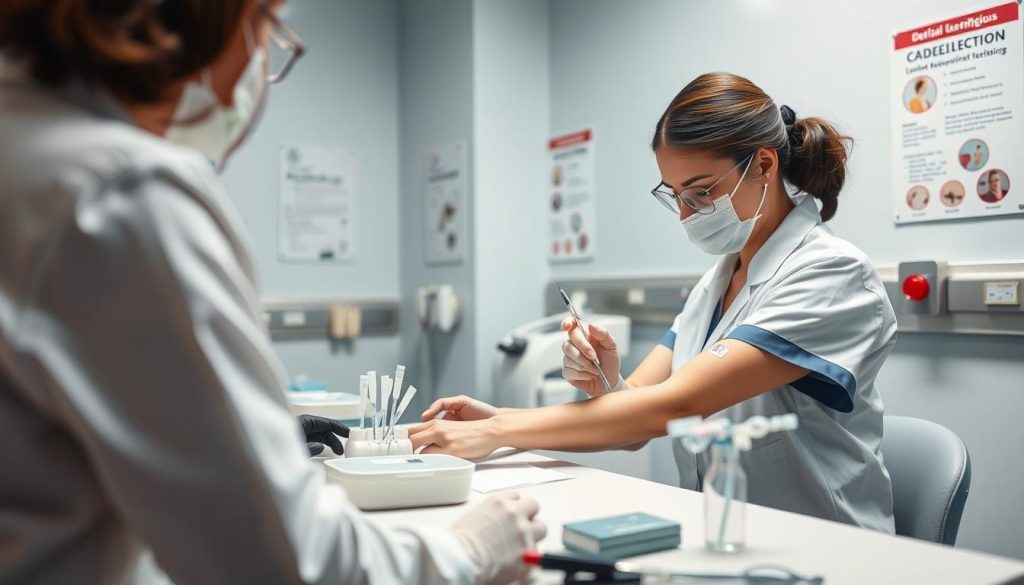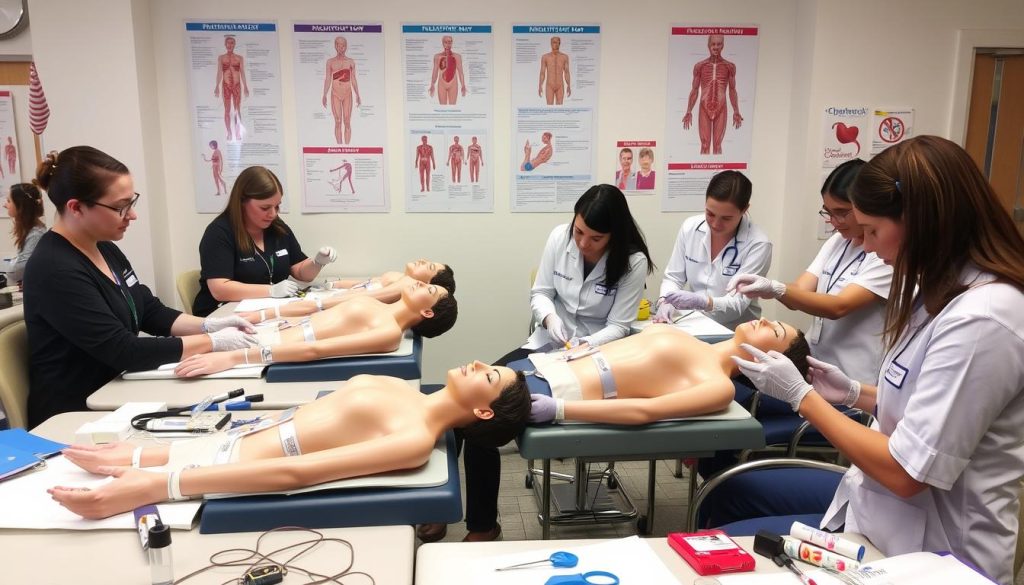Certified Phlebotomist Test: Preparation Guide
Many people looking for a career in healthcare choose phlebotomy. It’s the art of taking blood samples. Passing the Certified Phlebotomist Test is key to getting a phlebotomy license. This opens up many job opportunities.
This guide will give you the knowledge and strategies to do well on your phlebotomy certification exam. You’ll be ready to start a rewarding phlebotomy career.

Key Takeaways
- Understand the requirements for obtaining a phlebotomy certification
- Familiarize yourself with the format and content of the Certified Phlebotomist Test
- Explore effective study strategies, including phlebotomy training programs and practice tests
- Gain insights into the career outlook and earning potential of certified phlebotomists
- Develop the necessary skills and confidence to ace the phlebotomy certification exam
Understanding the Certified Phlebotomist Test
To become a certified phlebotomist, you must meet certain phlebotomy certification requirements. These include finishing a phlebotomy training program and passing a tough phlebotomy licensing test or phlebotomy board exam. The phlebotomy credentialing process checks if you know how to do venipuncture and other phlebotomy tasks safely and well.
Phlebotomy Certification Requirements
The phlebotomist certification requirements can differ by state. But, they usually include:
- Finishing a state-approved phlebotomy training program. This covers anatomy, physiology, and blood collection techniques.
- Doing a certain number of successful venipunctures during training, often 25 to 100 or more.
- Passing a phlebotomy competency evaluation to show you’re good at practical skills.
- Getting a state-issued phlebotomy license or certification. This might need you to pass a phlebotomy licensing test or phlebotomy board exam.
Exam Format and Content
The certified phlebotomist test has multiple-choice questions. They check your knowledge and skills in phlebotomy. The exam covers:
- Venipuncture techniques and procedures
- Anatomy and physiology related to blood collection
- Medical laboratory procedures and quality control
- Patient care and communication protocols
- Safety, infection control, and ethical considerations
Knowing the phlebotomy certification requirements and the phlebotomy board exam format helps. It prepares you for the challenges of getting certified. This ensures your success in phlebotomy.

Certified Phlebotomist Test Preparation Strategies
To prepare for the Certified Phlebotomist Test, you need a mix of hands-on training, deep study, and practice. First, sign up for an accredited phlebotomy training program. These programs teach you the basics and practical skills needed to be a great phlebotomist.
Phlebotomy Training Programs
Accredited phlebotomist training programs offer many benefits. They include classroom lessons, lab sessions, and hands-on clinical experience. This ensures you learn everything about phlebotomy. By finishing a good training program, you’ll be ready for the phlebotomy test prep and show your skills on the Certified Phlebotomist Test.
Study Guides and Practice Tests
It’s also key to use phlebotomy study guides and practice tests to learn more. These tools help you check your knowledge, find areas to improve, and get used to the test format. By practicing with phlebotomy practice tests, you can sharpen your skills and feel more confident on the exam.
By combining phlebotomy training programs and phlebotomy test preparation tools, you’ll gain all the knowledge and skills needed to be a top Certified Phlebotomist. With the right prep, you’ll be on your way to a successful career in phlebotomy.

Conclusion
The Certified Phlebotomist Test is a key step in a phlebotomist’s career. Knowing the exam well and improving your skills helps a lot. This way, you can feel ready and increase your chances of passing.
Keeping up with phlebotomy continuing education is vital. It helps you keep your certification and move up in your phlebotomy career paths. Getting certified can lead to many phlebotomy job opportunities. You could work in hospitals, clinics, or even offer mobile blood collection services.
Passing the phlebotomy license exam shows you’re good at blood collection training and venipuncture skills assessment. It means you know how to do phlebotomy safely and accurately. Seeing the phlebotomy licensure process as a chance to grow is important. It helps you succeed in this rewarding healthcare field.